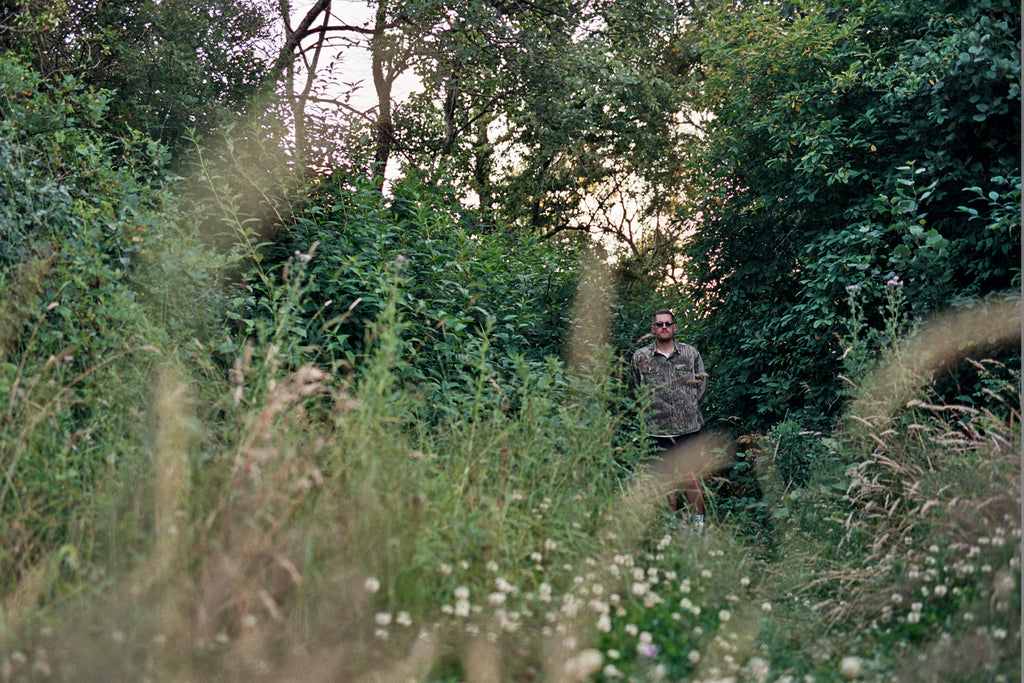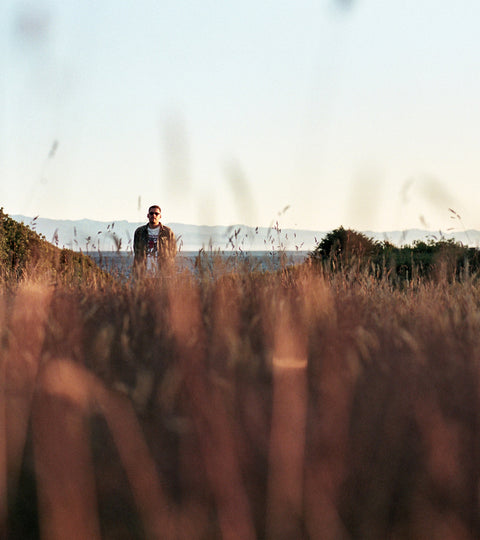Carbon Fibres 002

—
/ The high fashion industry loves to proclaim it’s a more sustainable option, largely due to ethical manufacturing [fair wages], smaller production runs [than fast fashion], and higher quality fabrics - is there any truth to this?
This is a difficult question to unpack because there are so many factors at play so I would be hesitant to simply say yes or no. To paint “luxury” brands with a broad brush and say they are a more “sustainable” option is difficult. It depends what element of the process you care about, the goals that brand, their commitment to sustainability, and transparency when it comes to their practices because these all vary greatly.
Because company practices vary so much you would really have to look at each brand specifically to know what you’re supporting. Buying “luxury” brands in theory means you're paying for the quality of the materials, the craftsmanship with which the item was made with, and designers eye which created the garment. Is it then entirely dependent upon what your motivation is for buying that garment. If you are investing in a garment for its quality with the intent of wearing it for many years then yes, it is ultimately better for the environment than buying 10 lower quality versions of that same item over a similar time frame.
I would tend agree with the fact that luxury brands generally pay their workers a living wage, source their materials from factories and producers which meet higher environmental standards, and construct their garments with greater attention to quality and craftsmanship. For these reasons buying a luxury garment could be considered a more sustainable and ethical option. The issue that tends to arise with buying “luxury” is the style of the garments is often reliant on the entire outfit being purchased from that brand or similar brands to match the style of that outfit. You need to purchase more and more items to remain relevant and to fit that specific style. If you buy a jacket but you can only wear it with a specific pair of pants and shoes to achieve the desired look then it inherently limits the longevity of those items. Considering how quickly styles and trends change it means these sorts of garments have a very short life span, and essentially have a built in “expiry date” regardless of their price.
When it comes to addressing the prices often associated with these types of brands I’m not going to pretend that shopping luxury is something that is within many people means or certainly for everyone. I think there are many more sustainable options available outside of luxury goods. So many great vintage options exist which are much more reasonably priced, additionally you not purchasing new clothing so there is no additional material inputs required to create the garment.
However if you are looking to purchase luxury or more expensive options there’s a few things I always try and add into my own decision making process, and you can feel free to take them or leave them, they are only suggestions. Firstly when I’m considering the price of something I try to think about the “PPW” or the “price per wear”. As cheesy as it sounds if you look at a $1,000.00 jacket for example and know that you are going to wear it 1000 times over, let’s say, 5 years - then it becomes easier to justify the purchase at $1.00 per wear. Whereas, if you buy ten $100.00 jackets over the same length of time, but only wear each one five times, you’ve bought 10 things which have cost you $20.00 per time wearing them. At that stage which of the purchases ultimately made more sense?
Secondly, I always try to think of five outfits in my closet which this garment could be styled with. If I can’t think of five right away, I know this item probably has a limited place within my wardrobe and might be difficult to get wear out of it that would make it a worthwhile purchase, and ultimately it is likely not worth the investment.

/ With no particular brand, store, or manufacturer in mind – I see a lot of “sustainable” proclamations made in the copy of emerging brands, makers, stores, and manufacturers.
I recently read about a concept called the “Jevon’s Paradox” which is the idea that “as efficiency increases, consumption increases in step”. As clothing has become increasingly cheaper to produce and the labour involved easier to outsource, so too have our levels of consumption increased. Historically people spent a much larger portion of their income on clothing than we do today, but they also shopped with longevity in mind. If you bought a coat it was relatively expensive but it was going to last you 10+ years, not 6 months or until you decide you want a different one. Which really got me thinking about the fashion industry as a whole and the goals which have been laid out by so many companies.
Sure its conceptually a good idea for an emerging brand to make more sustainable fabric choices, recycle materials, and rethink collections to be more ethically sourced - but if these actions are not in tandem with a change in our habits as consumers they aren’t going to accomplish much of anything. It’s fine to shop for a sustainably made t-shirt but if you buy 10 of them it kind of defeats the purpose of shopping sustainable in the first place.
Very few fabrics are overwhelmingly “sustainable”, I’m certainly no expert on the processing of natural fibres to fabric but things like linen and hemp fabrics are certainly much more sustainable choices than things like cotton or any plant based cellulose fibres like viscous which are very detrimental to the environment.
I would approach brands that make claims around “sustainability” with some caution. Many of these brands use techniques like “green washing” to present their products as more environmentally conscious than they actually are. They use buzz words like “natural”, “green”, even “organic” which can all be very misleading for many consumers. What part of this garment is actually “green” or “natural”? If the garment is “organic” and how much does that actually change impact it is having on the planet?
The average pair of blue jeans for example takes over 1,800 gallons of water to produce, and the carbon associated with the production is roughly the equivalent to driving 80 miles. Which part of those numbers did the fact that the garment is “green” actually improve upon?
There is no straightforward answer to shopping “sustainably”, the best action we can realistically take is to consider our own consumption habits. Do we really need that item? Until recycling technology improves dramatically the best garments you can buy if you need too, are probably ones that are not new at all.

/ Between the need to address the exploitation of contemporary slave labour, and egregious damage to the earth’s ecological systems: what are some key changes manufacturers, consumers, and retailers [like myself] can make in order to move towards a more sustainable industry?
There are certainly many areas of concern when it comes to what companies can do better moving forward. Strictly speaking we need to transform the way clothes are designed, sold, and used to break free from their increasingly disposable nature. We really need to phase out substances of concern; toxic chemicals & dyes, and plastic micro-fibres released - first and foremost.
A more conscious form of textile production needs be implemented to ensure that the material input is safe and healthy for everyone involved to allow for the feasibility of large scale recycling, and to be able to avoid negative impacts during the production, use, and after-use phase of the garments life cycle. This means that substances that are of concern to health or the environment are designed, from the start, so that no pollutants such as plastic micro-fibres are able to be inadvertently released into the environment and oceans.
Additionally, when a garment can be worn more often than someone is able or willing to do, the promotion of rental or second hand businesses could provide significant environmental benefits by diverting waste from landfills and reducing need for material inputs for new garment production. By designing and producing clothing of higher quality and providing access to them via new business models it would help to shift the perception of clothing from being a disposable item to being durable products to be cared for.
When it comes to the humanitarian aspect of this equation, the reality is it’s really with many of the companies where the fault and the responsibility lies. They are the ones ignoring abuses of workers rights, paying unfair wages, and ignoring environmental regulations. It might be difficult for someone reading this, outside of protesting in the streets, to know how to affect change as an individual on something at such a global scale.
There’s no easy answer, but I feel the best way for us to affect some form of change is through choosing not to supporting the system that perpetuates these problems. Your money is your vote. Refuse to spend money if a company’s practices do not meet your standards. Do your research, find out what a company’s values are before you buy something, is there a more sustainable option available that fits within your means? Becoming a conscious consumer, informing yourself, and understanding what your needs are can help you to focus on the things you value in the items you consume.
Ultimately, the majority of all the problems outlined in this interview both environmental and humanitarian all stem from our consumption habits a society. Many of these systems would not be operating to the degree they are if there wasn’t people there to perpetuate the demand for this amount of goods. It comes down to us to do what we can to change our habits, if we all choose to consume less and consume better, companies with outdated practices who do not meet environmental standards, and who ignore human rights simply won’t be able to survive.

/ With all that being said, can you leave us with a few resources for more info on everything eco-friendly?
There’s definitely a few resources that I could offer up for people hoping to read more about many of the issues surrounding the fashion industry and what people are doing to make changes. These accounts are all good stepping stones to informing your own research and good resources to start informing some personal charges.
@future__dust is a page that acts as a “place for responsible fashion”. I stumbled across this account maybe a year ago and have been fascinated and really engaged with the content ever since. The mix of current articles and featured sustainable brands allows for both the highlighting of the problems and the discussions around the solutions to take place on one page.
@sustainablefashionforum is a page dedicated to highlighting the issues around all elements of the fast fashion industry, tons of relevant articles, well-written insights, and sustainable options.
@atmos - is a page dedicated to climate and culture, the page is not solely focused on the fashion industry but does a great job highlighting many of the issues surrounding it along with addressing many glaring issues with climate change and human impact on the environment.
@fash_rev - page dedicated to greater transparency within the fashion industry, they deal with a lot issues around the humanitarian side of the fashion industry but also covers tons of relevant information around current issues in the industry.
As far as vintage and secondhand pages I’m currently into, I can definitely recommend a few resources, they might not be for everyone, granted some these pages are showcasing some of the crème de la crème of the vintage world thus the prices tend to match the quality of what they are sourcing. Maybe you are able to find something on these pages you are into, maybe you are able to use them as inspiration for your own vintage searches. Hopefully they can provide some direction or motivation for people to get out there and search thrift stores, hunt through flea markets, and feel inspired to look at the second hand market as a way to update their wardrobes and have less of an impact on the earth:
@unsoundrags - is a page located in Los Angeles, they source super high-quality vintage goods and feature a diverse selection of garments. The page often features super unique items of Americana, vintage collegiate apparel, and a diverse selection of denim.
@burned_out - based in the UK, this page has some of the best selection of vintage band tees I’ve seen on Instagram. With weekly drops of rare and hard to find shirts this page always bring the heat but the prices definitely tend to match the quality of what’s on offer.
@saunders_militaria - located in Nova Scotia, this page has one of the best curated selections of vintage and military surplus gear that I’ve found to date. Each post often offers a lesson on the unique history of a garment. Military surplus is one of the best forms of vintage clothing you can invest in, as it’s built for the military it must adhere to certain standards of quality with its production. This means you’re getting a quality garment for a fraction of the cost of many contemporary options.
@detachedgarments - located in Seattle, this page has one of the most well curated and presented selections of vintage apparel I’ve found on Instagram. The quality of the photos and the presentation of the garments really adds to the quality of the garments sourced.
@new_secondary - located in Vancouver/Victoria BC, this page offers highly curated designer men’s goods. The quality of the garments on offer and the professionalism when it comes to the photography can’t be understated. From archival designer garments to current street wear, this page offers a broad selection of goods.
@victoriavintage_ - located in Victoria BC, this page offers a wide range of products, from designer to vintage, sneakers and accessories. I personally do a lot of business with these guys buying/trading/selling. Awesome shop with very approachable pricing and a great group of guys running it.
I just want to extend my thanks to Graham and @_calculus for asking me to do this, it’s been a cathartic experience for me to get this all out on paper and I definitely appreciate the opportunity to be asked to speak to these issues. @carbon.fibres has offered me a chance to learn and continue to educate myself on the issues around the fashion industry. I hope people found this informative and continue to follow along with me as I continue to research these issues. My hope is somewhere down the line to use @carbon.fibres as the basis for a project for my undergraduate degree, I hope that people will continue to engage with the page and offer their perspectives and insights as it continues to develop.

—
Photography - Graham Newmarch
Questions - Graham Newmarch
Knowledge - Nic Jekill

